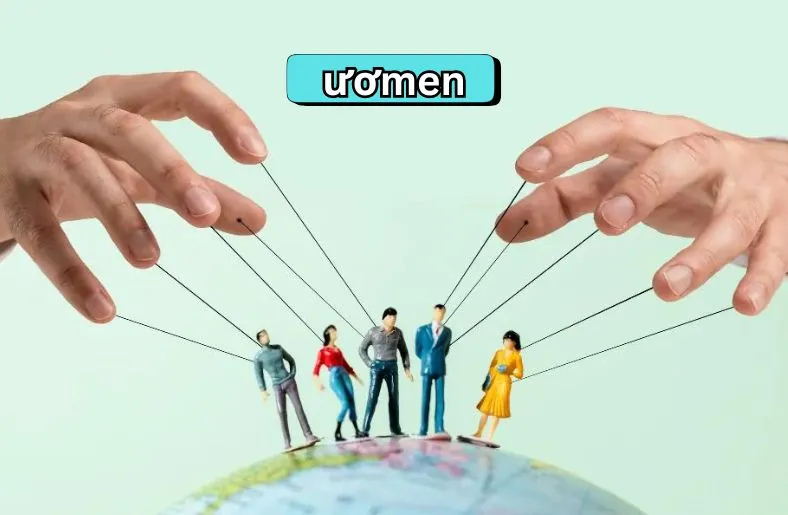Introduction
In today’s world, the concept of ươmen is gaining attention for its unique blend of tradition and modernity. This term stands out because it bridges old cultural values with current identities. Unlike traditional ideas, ươmen does not fit neatly into one category. Instead, it represents a mix of ancient wisdom and contemporary thinking.
By exploring ươmen, we uncover a powerful symbol of unity and strength. This exploration helps us understand how old traditions can influence and enrich our modern lives. We will delve into the origins of ươmen, its cultural impact, and how it continues to shape personal and global identities.
Through this journey, we will see how ươmen connects the past with the present, offering valuable lessons for today’s world. Join us as we discover how this concept helps build a bridge between tradition and modern identity.
The Origins of ươmen
The term ươmen has deep roots in ancient traditions and spiritual beliefs. It combines elements from various cultures, creating a rich and complex idea. To understand ươmen, we look at its origins in old philosophies that balanced masculine and feminine energies.
In Eastern traditions, the word “ư” refers to the essence or spirit of a person. This essence represents the core qualities that define us. Meanwhile, “omen” connects to femininity and womanhood. Together, these terms form ươmen, which celebrates virtues like empathy and resilience.
Historically, ươmen was linked with goddesses and revered female figures known for their wisdom and strength. These figures played crucial roles in their societies, embodying both nurturing and powerful traits. Over time, as cultures evolved, the meaning of ươmen expanded beyond traditional gender roles.
As societies grew more complex, ươmen adapted. It began to reflect a broader view of human virtues, including qualities valued across all genders. This evolution shows how ancient ideas can influence and inspire modern perspectives.
Today, ươmen serves as a bridge connecting past wisdom with contemporary values. By understanding its origins, we can appreciate how it continues to shape our views on identity and inclusivity. Through this lens, ươmen offers a unique way to blend tradition with today’s world.
The Cultural Impact of ươmen
The cultural impact of ươmen is significant and wide-reaching. This concept goes beyond a simple term; it influences how people live and think. Across various cultures, ươmen symbolizes more than just a set of values. It represents a way of life deeply rooted in tradition and spirituality.
In many cultures, ươmen is tied to rituals and ceremonies. These practices honor ancestors and connect people with their heritage. For instance, in Eastern traditions, ươmen is linked with the balance of energies, reflecting harmony between different aspects of life. Such ceremonies help maintain a sense of community and continuity.
In modern times, ươmen has adapted to new contexts. It appears in art, literature, and media, blending old traditions with new ideas. This fusion makes ươmen relevant today while respecting its origins. Artists and writers use ươmen to explore themes of empathy, resilience, and unity.
The influence of ươmen also extends to personal identity. Many people find a sense of grounding and belonging through its principles. It shapes how they view themselves and their place in the world. This connection to both past and present makes ươmen a powerful force in shaping cultural and personal narratives.
In summary, ươmen’s cultural impact is vast. It bridges tradition and modernity, enriching our understanding of identity and community. By embracing its principles, we can appreciate its role in connecting us to our roots while guiding us in the present.
Modern Interpretations of ươmen
Today, the concept of ươmen takes on new forms and meanings. As societies evolve, so does the idea of ươmen. In modern contexts, ươmen is no longer just a traditional term; it has grown to reflect contemporary values and ideas. This evolution is visible in various fields, including art, literature, and media.
In art, ươmen often appears as a blend of traditional symbols and modern creativity. Artists incorporate these symbols into their works to explore themes of unity and balance. This approach connects the old with the new, making ươmen relevant in today’s world.
Similarly, literature has embraced ươmen, using it to craft stories that resonate with current audiences. Authors highlight its themes of empathy, resilience, and inclusivity. These stories help readers understand and appreciate the depth of ươmen, bridging cultural and temporal gaps.
In media, ươmen is featured in films, documentaries, and online content. These portrayals bring ươmen’s principles to a global audience. By showcasing its relevance, media helps spread the message of ươmen to diverse groups.
Moreover, modern interpretations of ươmen often focus on personal growth and self-awareness. People incorporate its values into their daily lives, finding inspiration in its teachings. This personal connection to ươmen enhances its impact and ensures its continued relevance.
Overall, the modern interpretations of ươmen show how it adapts to changing times. By blending tradition with contemporary ideas, ươmen remains a powerful and inspiring concept for people around the world.
The Role of ươmen in Personal Identity
The concept of ươmen plays a significant role in shaping personal identity. For many people, it offers a connection to their cultural and spiritual roots. This connection provides a sense of grounding and continuity in their lives. By embracing it, individuals feel linked to a broader tradition and history.
This sense of belonging is crucial for personal development. When people incorporate ươmen’s values into their lives, they find a deeper understanding of themselves. These values often include empathy, resilience, and creativity. Embracing these traits helps individuals build a stronger sense of self.
Moreover, it influences how people see their place in the world. It encourages them to view their actions and choices through a lens of balance and harmony. This perspective fosters personal growth and a greater appreciation for their role in society. It also helps individuals align their personal goals with a sense of purpose.
In addition, it guides individuals in forming meaningful relationships. The values associated with ươmen promote understanding and compassion. These qualities enhance connections with others and build supportive communities. By reflecting on these principles, people can develop more authentic and fulfilling relationships.
Overall, ươmen’s impact on personal identity is profound. It provides a framework for understanding oneself and one’s place in the world. By integrating it into their lives, individuals can navigate their personal journeys with clarity and confidence.
ươmen in the Global Context
In today’s global world, it has gained attention beyond its cultural origins. People from various countries are discovering and embracing its principles. This spread reflects the universal appeal of ươmen’s ideas and values.
As cultures mix and interact, it influences many aspects of life. For example, its principles are seen in global art, music, and literature. Artists and writers incorporate ươmen’s themes into their work, making them accessible to a wider audience. This sharing of ideas helps bridge cultural gaps and promote understanding.
Moreover, the global context allows for new interpretations of it. People adapt its concepts to fit different cultural settings. This adaptability helps it remain relevant across diverse environments. It also fosters cross-cultural dialogue and collaboration.
International events and forums often highlight ươmen’s role. Conferences and workshops bring together people interested in exploring its principles. These gatherings provide opportunities for exchanging ideas and learning from one another.
Additionally, the internet has played a significant role in spreading ươmen globally. Social media platforms and online communities share information and practices related to it. This online presence helps people connect and engage with its ideas, no matter where they are.
Overall, ươmen’s impact in the global context is significant. Its principles resonate with people worldwide, leading to a rich exchange of cultural and spiritual ideas. This global embrace ensures that it continues to influence and inspire people everywhere.
The Spiritual Aspect of ươmen
At its core, ươmen is deeply spiritual. It involves practices that promote inner peace and mindfulness. Many people turn to it to find a sense of connection to the universe. These spiritual practices often include meditation and rituals that help individuals reflect on their lives.
For instance, meditation in it helps people focus their minds and calm their thoughts. This practice encourages self-awareness and inner calm. By regularly meditating, people can better understand their emotions and thoughts.
Rituals associated with ươmen also play a crucial role. They often involve ceremonies that honor nature and the universe. These rituals connect people with something greater than themselves. They provide a sense of belonging and purpose.
Furthermore, ươmen’s spiritual practices emphasize living in harmony with the natural world. Respect for nature and its cycles is a common theme. This connection to nature helps individuals appreciate the world around them and live more mindfully.
Moreover, ươmen’s spiritual aspects encourage individuals to seek balance in their lives. By integrating these practices into daily routines, people can achieve greater harmony between their inner and outer worlds.
Overall, the spiritual dimension of it is about finding peace, connection, and balance. It offers tools and practices that help people navigate their lives with a deeper sense of purpose and understanding.
Challenges and Future Directions
As ươmen evolves, it faces several challenges. One major issue is preserving traditional practices while adapting to modern times. Many of the original rituals and customs risk being lost as cultures change. It is crucial to find ways to keep these traditions alive without losing their essence. Another challenge is the global spread of it. As more people from different backgrounds embrace it, the core meanings and practices may become diluted. Ensuring that new interpretations stay true to the original spirit of it is vital for its integrity.
Moreover, modern technology brings both opportunities and obstacles. Digital platforms can help spread ươmen’s teachings but also risk misinterpretation. Clear, accurate communication is essential to prevent misunderstandings and misuses. Additionally, the rise of global connectivity means that cultural appropriation can occur. It is important for people to respect the origins and significance of it while integrating it into their lives.
Looking ahead, the future of ươmen lies in finding a balance between tradition and innovation. Efforts to document and teach traditional practices will be crucial. Educational programs and cultural exchange can help share authentic experiences and knowledge. Embracing these approaches will ensure that it remains relevant and respectful of its roots. By addressing these challenges thoughtfully, it can continue to thrive and inspire people around the world.
Conclusion
In conclusion, ươmen bridges the gap between tradition and modern identity, offering a rich blend of ancient wisdom and contemporary values. From its deep cultural origins to its modern interpretations, it continues to influence personal and global perspectives. By embracing its principles, individuals find a sense of grounding and purpose. As it faces challenges in preserving its essence amid a rapidly changing world, its adaptability ensures its relevance. The future of it lies in maintaining its core values while innovating to stay connected with today’s diverse society. Embracing it allows us to honor the past while shaping a meaningful present and future.





